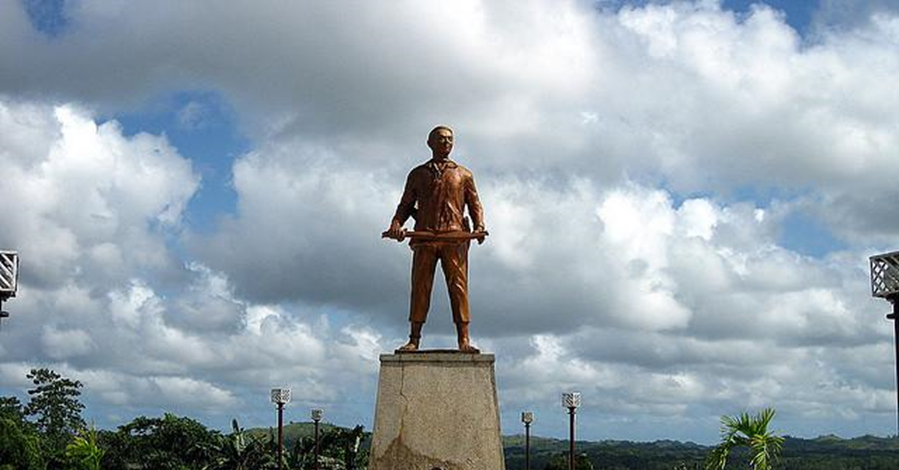
Proem
As I indicated in the previous articles, the account of Fr. Juan de la Concepcion does not have dates. We must refer to other accounts for the dates. However the accounts of Fr. Concepcion contains pieces of information not found in other sources.
Increase of fighters
In Year 1754 an invasion force was organized by the Spaniards to conquer the Moros at Pangil Bay. It was commanded by Fr. Jose Ducos, S.J. of Cagayan de Oro.
The main fighters of this force were the 800 Boholanos raised from Tagbilaran, Maribojoc, Inabanga, Baclayon, Loay, and Loboc.
After fighting the Moros at Pangil Bay, northern Mindanao, and Tandag, Surigao the force was disbanded in year 1759. About one-half or 400 of the Boholano fighters returned to Bohol.
Upon their return to Bohol they found out that the families that they left behind were in miserable conditions. Instead of appreciating the Boholanos who were fighting for the Spaniards, the families were made to pay the royal tribute (tributo real), their properties were confiscated and others were imprisoned for not paying their debts. The women were not exempted from maltreatment.
The returning Boholano fighters were angry and disgusted. The rescued their families and brought them to the hills to join the camp or group of Francisco Dagohoy.
Immediately the group of Dagohoy was augmented by 400 veteran fighters who experienced hand-to-hand fighting in Mindanao against the Moros.
The returning Boholanos enjoyed their new liberty and living comfort because they occupied the most fertile portion of Bohol.
Immediately, Dagohoy changed tactics. He was no longer in the defensive but instead he begun his offensive against the Spanish held areas in Bohol.
Parley with Bishop Espeleta
Immediately the Spaniard priests requested help from the Spanish administration in Manila. It so happened that year 1759, Gov.-General Arandia died. The Acting Gov.-General was Bishop Miguel Lino de Espeleta of Cebu.
In year 1762, Acting Gov.-General Bishop Espeleta together with the Alcalde Mayor of Cebu came to Inabanga, Bohol to parley with Dagohoy. The Spanish records say that Bishop Espeleta gave a safe-conduct pass to Dagohoy so that he will come down to Inabanga.
If you will read the records carefully it seems to be the other way around. It was Bishop Espeleta that was given the safe-conduct pass so he could meet with Dagohoy.
Bear in mind that in 1762 to 1764 the British was able to conquer Manila. Before the attack on Manila, the British stayed at the small island called Cagayan de Sulu near the southern tip of Palawan.
The British knew that Bohol was already in rebellion. Through the Moros, the British sent emissaries to Bohol asking the Boholanos to help in the attack of Manila. The fighters of Dagohoy were supplied with arms and training and told to await the British ships.
When the two British ships arrived in Cagayan de Sulu, it was already full of soldiers. The British immediately went to Manila without passing Bohol.
However, the Boholanos were already supplied with firearms and it was the reason why the Dagohoy rebellion was successful to become a revolution.
When Bishop Espeleta and Dagohoy met at Inabanga, it was already Dagohoy who was superior in arms. So in all likelihood it would be Bishop Espeleta who will be requesting for a safe-conduct pass.
In fact Bishop Espeleta agreed to the demand of Dagohoy that the Spanish soldiers will be withdrawn from Bohol. In return, Dagohoy promised to rebuild the Inabanga Church that was burned. When Bishop Espeleta went back to Cebu, Dagohoy started rebuilding the church. However, not all Spanish soldiers were withdrawn and Dagohoy only finished the foundation of the church.
In year 1767 the Spanish King had a disagreement with the Jesuits. The King ordered the expulsion of the Jesuits in all Spanish dominions. In Bohol and the Philippines, the order was carried out in the year 1768.
When the Jesuits left Bohol, the Spanish administration in Bohol was taken over by the Augustian Recollects. The Vicar Provincial Fr. Pedro de Santa Barbara had a better relations with Dagohoy than the Jesuits.
